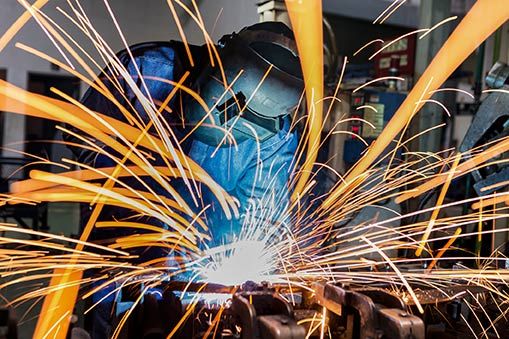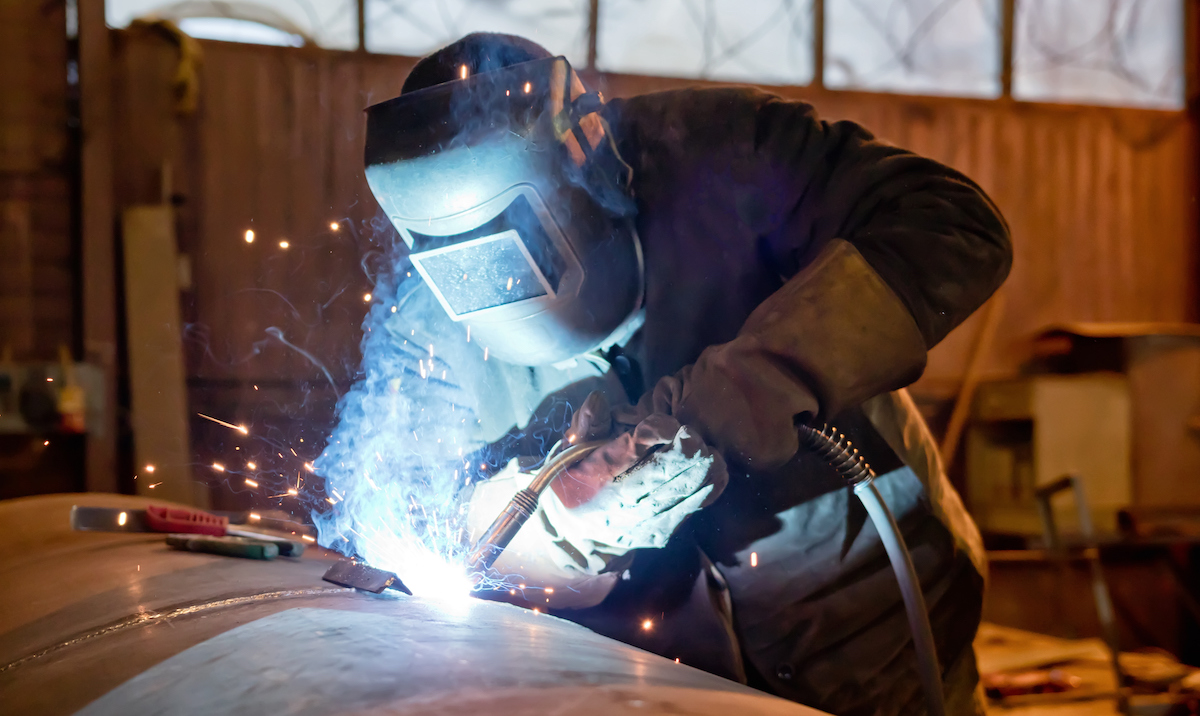Typical Welding Repair Issues and How to Address Them Properly
Welding repair work frequently encounter a variety of problems that can jeopardize the honesty of the end product. Typical issues consist of inadequate infiltration, porosity, and imbalance, among others. Each flaw presents unique obstacles that need specific techniques for resolution. Recognizing these problems is necessary for welders intending to boost their skills and results. This conversation will certainly discover these typical welding repair work issues and effective techniques to address them.
Poor Penetration
Inadequate infiltration takes place when the weld metal stops working to fully fuse with the base product, causing weak joints and potential structural failures. This issue often originates from not enough warm input, incorrect electrode angle, or incorrect welding rate. Welders may encounter poor penetration because of a mistake of the required specifications for a details material thickness or type. Furthermore, contamination on the base product's surface can impede effective bonding, worsening the trouble. To address inadequate infiltration, welders should guarantee ideal setups on their equipment and maintain a tidy work surface. Routine assessment of welds is advised to determine any shortages early, enabling for timely improvements and the avoidance of endangered architectural honesty in bonded settings up.
Porosity
Porosity is a typical flaw in bonded joints that materializes as tiny gas bubbles caught within the weld steel. This flaw can compromise the stability of the weld, leading to reduced toughness and possible failing under tension. Welding. Porosity generally emerges from contamination, dampness, or inappropriate welding techniques, which permit gases to escape into the molten weld swimming pool. To attend to porosity, welders ought to guarantee proper surface area prep work, keep a clean workplace, and use suitable welding specifications. Furthermore, picking the ideal filler material and protecting gas can mitigate gas entrapment. Normal evaluation and testing of welds can aid determine porosity early, ensuring prompt restorative actions are taken, consequently preserving the quality and dependability of the bonded framework
Misalignment
Imbalance in welding can arise from numerous variables, including inappropriate arrangement and thermal expansion. Recognizing the source is essential for effective resolution. Several improvement techniques are offered to straighten components and assure architectural honesty.
Causes of Misalignment
Welding imbalance commonly originates from a selection of underlying problems that can jeopardize structural integrity. One primary cause is inappropriate fit-up of elements before welding, which can cause gaps and uneven surfaces. Variations in thermal development throughout the welding process can also cause distortion, particularly if the products being signed up with have different coefficients of growth. Furthermore, inadequate fixturing and securing might fail to hold components firmly in place, bring about activity during welding. Improperly maintained tools, consisting of welding machines and tools, may present inconsistencies in the weld bead, additional adding to imbalance. Ultimately, operator mistake, coming from inadequate training or experience, can additionally play a substantial duty in producing misaligned welds.
Improvement Techniques Available
Dealing with misalignment effectively needs a mix of corrective techniques tailored to the details concerns available. One typical approach is making use of jigs or fixtures to hold parts in the right position during welding, making certain constant positioning. In addition, preheating the products can help in reducing distortion and boost fit-up. For significant misalignment, mechanical realignment methods, such as making use of hydraulic jacks or clamps, can be employed to remedy the setting prior to welding. Post-weld heat treatment may likewise be required to relieve anxieties caused by imbalance. Lastly, careful examination and adjustment during the configuration stage can stop imbalance issues from becoming significant troubles, promoting a smoother welding process and improving general structural integrity.
Distortion
Distortion is a typical difficulty in welding that can occur from numerous factors, consisting of unequal heating & cooling. Understanding the causes of distortion is crucial for executing effective avoidance strategies. Resolving this concern not only improves architectural integrity but likewise boosts the overall high quality of you can look here the weld.
Reasons for Distortion
When subjected to the intense warm of welding, products commonly undertake changes that can bring about distortion. This sensation primarily emerges from thermal development and tightening during the welding process. As the weld area heats up, the product increases; upon cooling, it contracts, which can create inner tensions. Additionally, uneven home heating across a workpiece can exacerbate these stresses, resulting in bending or flexing. The kind of material additionally plays a substantial duty; steels with varying thermal conductivity and coefficients of expansion might react in different ways, resulting in unforeseeable distortions. Additionally, inadequate joint layout and inadequate fixturing can add to misalignment throughout welding, enhancing the possibility of distortion. Recognizing these causes is necessary for efficient welding repair work and avoidance techniques.
Prevention Techniques
Efficient avoidance methods for distortion throughout welding focus on controlling warm input and guaranteeing correct joint design. Preserving a consistent heat input helps to reduce thermal growth and contraction, which can cause distortion. Making use of strategies such as preheating the work surface can also decrease the temperature level gradient, advertising consistent heating. Furthermore, choosing ideal joint designs, such as T-joints or lap joints, can improve security and decrease anxiety focus. Implementing correct fixturing to safeguard the work surfaces in position even more help in keeping placement during the welding procedure. Finally, staggered welding sequences can distribute heat more evenly, stopping localized distortion. By using these strategies, welders can greatly reduce the probability of distortion and enhance the overall quality of their welds.
Fracturing
Cracking is a typical issue run into in welding fixings, frequently resulting from numerous factors such as incorrect cooling prices, product selection, or inadequate joint prep work. The incident of cracks can significantly endanger the honesty of the weld, resulting in prospective failures during operation. To resolve this problem, welders need to initially examine the source, making certain that products are suitable and appropriately chosen for the certain application. Additionally, regulating the cooling rate during the welding process is vital; rapid cooling can generate anxiety and cause fracturing. Appropriate joint style and preparation additionally add to decreasing the risk. Applying these approaches can boost weld high quality and sturdiness, ultimately minimizing the likelihood of breaking in ended up weldments.

Incomplete Blend
A substantial problem in welding repairs is incomplete fusion, which occurs when the weld metal does not effectively bond with the base material or previous weld passes - Belgrade. This flaw can cause weaknesses in the joint, possibly jeopardizing the stability of the bonded structure. Variables adding to insufficient blend include inadequate heat input, incorrect welding strategy, and contamination of the surfaces being joined. To resolve this problem efficiently, welders ought to ensure appropriate pre-weld cleaning and surface area preparation, in addition to adjust their welding criteria to achieve adequate infiltration and combination. Routine evaluation throughout the welding procedure can likewise aid recognize incomplete fusion early, enabling for timely rehabilitative steps to enhance the total high quality of the weld
Overheating
While welding repair work can boost structural honesty, overheating offers a significant obstacle that can lead to material degradation. Excessive warmth throughout welding can alter the mechanical properties my latest blog post of steels, resulting in decreased strength, raised brittleness, and bending. This phenomenon is particularly vital in high-stress applications where architectural dependability is extremely important. Identifying getting too hot can involve visual examinations for discoloration or distortion, in addition to keeping an eye on temperature throughout the welding procedure. To reduce the threats connected with overheating, welders need to use ideal methods, such as controlling warm input, readjusting travel rate, and utilizing suitable filler materials. In addition, executing pre- and post-weld warmth therapies can help recover product buildings and improve the general quality of the repair service, making certain lasting performance and safety.
Often Asked Inquiries
What Are the Usual Indicators of a Welding Flaw?

How Can I Check My Welds for Quality?
To examine welds for high quality, one can make use kampuh welding of aesthetic inspections, ultrasonic testing, and radiographic approaches. Each technique ensures architectural integrity, recognizes issues, and confirms adherence to defined standards, ultimately enhancing the integrity of the welded joints.
What Safety Preventative Measures Should I Take While Welding?
When welding, one need to prioritize safety by wearing suitable personal protective devices, guaranteeing correct air flow, safeguarding flammable materials away, keeping a tidy office, and knowing surroundings to protect against injuries and accidents.
Can I Fix a Weld Without Redoing the Entire Joint?
Fixing a weld without remodeling the whole joint is possible, depending on the damage (Montana Mobile Welding and Repair Belgrade Fabrication). Strategies such as grinding, including filler product, or utilizing a welding process can efficiently address specific defects while protecting the bordering framework
What Devices Are Important for Effective Welding Repair Works?
Necessary tools for effective welding repairs consist of a welding equipment, cable brush, mill, protective equipment, clamps, and filler products. Each device plays an essential duty in making sure quality and safety and security during the repair work procedure. Porosity typically emerges from contamination, wetness, or improper welding techniques, which permit gases to escape into the liquified weld swimming pool. Badly kept equipment, consisting of welding equipments and tools, might present variances in the weld bead, additional contributing to misalignment. When subjected to the extreme warmth of welding, materials frequently undergo modifications that can lead to distortion. Splitting is an usual concern encountered in welding fixings, commonly resulting from various factors such as improper cooling prices, product selection, or poor joint preparation. A substantial issue in welding repair work is insufficient combination, which happens when the weld metal does not effectively bond with the base material or previous weld passes.